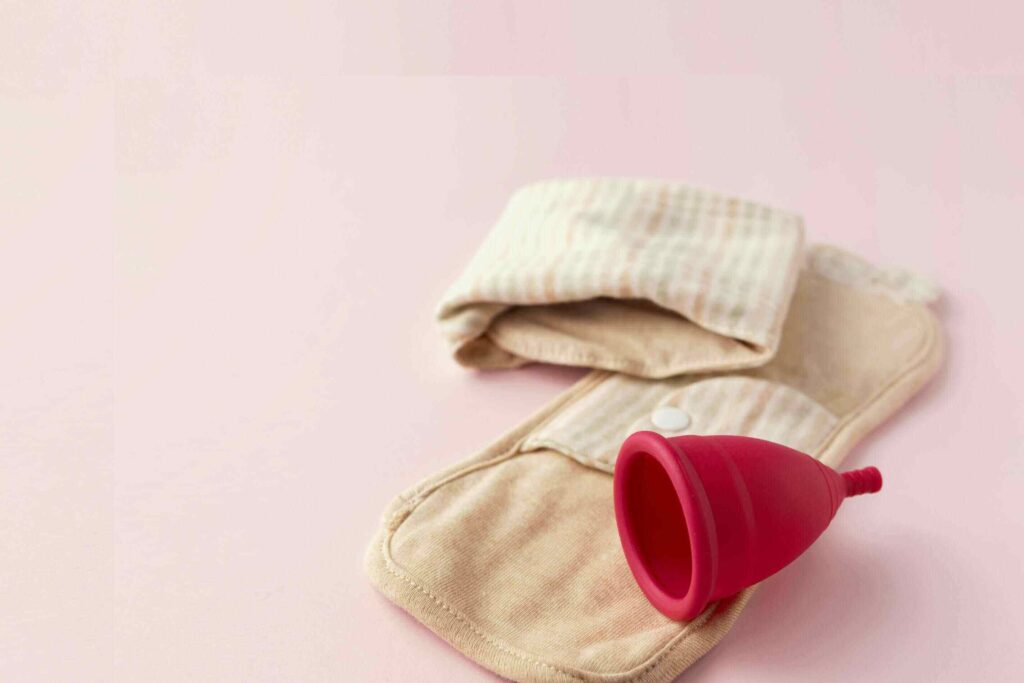Sustainable menstruation practices and products gaining in popularity
Considering the increasing environmental concerns and pollution, creating awareness about menstrual hygiene and sanitary products will assist people in making eco-friendly choices.

Today, sustainability has evolved into a key issue for almost every industry and personal hygiene products are no exception. There has been a surge in the discussions around a more green and sustainable living that has led people to reevaluate their choices of products that they utilise regularly. For ages, disposable items such as tampons and pads have been the most popular choice among women since they offer convenience and accessibility. However, with the rise of environmental concerns, people have started adopting reusable items such as period panties and menstruation cups.
While this transition focuses on improving the cognitive health of women globally, it also protects the planet’s health. According to the World Health Organization, around 1.8 billion women globally menstruate in a month. Looking at such vast numbers and the increasing female population, sustainable menstruation has gained popularity. It involves people becoming mindful of their sanitary hygiene choices while avoiding the unlawful dumping of personal waste in their nearby surroundings.
Decomposition of different sanitary products
Sanitary items, whether disposable or reusable, break down at different rates based on their design and materials. Disposable products, such as pads and tampons, are meant for one-time use and are typically made from materials like cotton, rayon, or plastic. Although these materials absorb well, the use of synthetic components slows down the decomposition process. However, improvements in biodegradable throwaway items are introducing new possibilities that degrade more swiftly.
Additionally, reusable products can be used over an extensive period. For instance, menstrual cups are made with silicone and can last up to 10 years. They are cost-effective and require a few cleaning steps. It is essential to wash the menstrual cup with clean water at least twice a day during period days, preferably every 4–8 hours. After withdrawing the cup and emptying its contents, it can be washed with cold water before being re-inserted.
Cloth pads, on the other hand, are made from natural fibres like cotton or bamboo; they can be machine-washed and ensure durability. They are gentle on the skin and do not cause rashes. Even though they will eventually be thrown away, they produce less waste than disposable sanitary products. Also, cloth pads may appear to be expensive at first, but their long-term use makes up for it.
Impact of sanitary products on the environment and body
The materials used in disposable and reusable sanitary products are designed to meet consumers’ comfort, absorbency and cleanliness requirements. Disposable products include plastic backings or adhesive strips for additional protection. These materials are utilised for their potential to offer optimal absorbency, security and convenience, ensuring that women feel comfortable and safe throughout the day. Consequently, every year, 12.3 billion sanitary napkins generate 1,13,000 tonnes of waste, as per a report published in ScienceDirect.
In contrast, reusable items are often composed of durable and skin-friendly materials that are intended to last longer. Since menstrual cups are made of silicone or rubber which are hypoallergenic, these are apt for period usage. Cloth pads and period panties are also constructed of breathable organic materials like cotton or bamboo, which are suitable for the skin and are washable. Moreover, these products reduce skin irritation, making them a viable choice among women looking for sustainable options.
Evolution of sanitary products
Menstrual products have evolved greatly to meet shifting societal requirements as well as technological improvements. Traditionally, women used handmade cotton cloths or rags during their menstruation cycle. Though these products were easily accessible, they required frequent washing, which was time-consuming and less convenient than the modern-age options. They were also quite ineffective due to their less absorbent properties, which led to leakages. In a study published in ScienceDirect, it was found that the traditional cloths or rags that were not washed thoroughly during periods increased the chances of infections and infertility among women.
In recent times, the development of sanitary products has transformed menstrual hygiene by guaranteeing increased convenience, cleanliness and accessibility. The modern disposable pads and tampons are made with absorbent materials, offering both protection and comfort. They have rapidly become the daily household norm, owing to their greater usage due to their benefits. With the transition to reusable solutions, there has been a change in people’s interest with improvements in design and material. This paradigm shift to reusable sanitary products allows consumers to select items that integrate sustainability with modern convenience.
Promoting awareness about menstrual product choices
Considering the increasing environmental concerns and pollution, it has become imperative to educate all genders of society about menstrual hygiene and their products. This, in turn, will assist people in making eco-friendly choices. Conventionally, disposable items were more advertised owing to their convenience, resulting in increased familiarity and uptake.
In the present scenario, the focus has been shifted to promoting awareness about reusable items regarding their extended benefits. People have started using social media and other online platforms to provide knowledge about the available sustainable menstrual products, emphasising their environmental impact, cost-effectiveness and health benefits.
In a nutshell, menstrual education empowers individuals to make informed decisions regarding sanitary products, concerning both sustainability and their health. Furthermore, access to sanitary products should not be considered a privilege but right, prompting organisations and governments to ensure that all women receive menstrual products that are good for their health as well as the environment.

